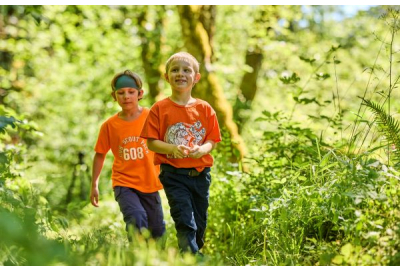The Buddy System in Scouting: Why No Scout Should Go It Alone
You’ve probably heard it since your first day in Scouting: never go alone. Simple, right? But the Buddy System is more than a rule—it’s a mindset. It’s one of the oldest, most trusted safety practices in Scouting, and it’s the reason generations of Scouts have learned how to explore confidently while keeping each other safe.
So, what exactly is the Buddy System, and why does it matter so much?
What Is the Buddy System?
At its core, the Buddy System means you always have someone watching out for you—and you’re watching out for them. It’s how Scouts travel, swim, hike, camp, and even volunteer. Two Scouts pair up to share responsibility for each other’s safety and success.
In the field, it looks like this:
-
On a hike: Buddies stick together on the trail, keeping pace and making sure no one falls behind.
-
In the water: Swimming buddies check in regularly and alert an adult if something doesn’t look right.
-
At camp: Buddies work side-by-side setting up tents, cooking meals, and heading to activities.
It’s practical, sure—but it’s also about accountability, teamwork, and trust.
How the Buddy System Works
The Buddy System is simple, but it only works when Scouts use it the right way—every time. Here’s what that looks like in action:
-
Pair Up Before Every Activity.
Before hiking, swimming, camping, or any event, Scouts are assigned a buddy. Leaders make sure everyone knows their partner before the activity starts. -
Stick Together—Always.
Buddies stay within sight and hearing distance of each other. That means no wandering off alone, even for a quick trip to refill a water bottle or grab gear. -
Look Out for Each Other.
Each Scout is responsible for their buddy’s safety. That includes checking that gear is packed, hydration is handled, and both Scouts are accounted for during roll calls. -
Report Concerns Right Away.
If a buddy is missing, hurt, or seems unwell, it’s the partner’s job to alert a leader immediately. Quick communication keeps small problems from becoming emergencies. -
Check In and Check Out.
Leaders do “buddy checks” throughout the day—especially during transitions like leaving camp, entering water, or starting a new trail. Buddies also check in before heading home to confirm both are safe and accounted for.
When followed consistently, the Buddy System turns simple pairings into a network of awareness and protection.
Why Use the Buddy System?
The world is full of distractions. Phones buzz, trails wind, daylight fades fast. It’s easy to lose track of time or direction. The Buddy System builds in a safeguard: when one Scout stumbles, the other notices.
Here’s why it remains essential:
-
Safety first - Emergencies happen fast. Having a buddy means help is always just a few steps away.
-
Confidence builder - Younger Scouts feel braver knowing they’re not on their own.
-
Leadership in action - Older Scouts learn to model responsibility and awareness for others.
-
Trust in the team - It reminds everyone that Scouting is built on looking out for each other.
-
Shared experience - Whether it’s reaching the summit or making it through a downpour, moments are better when shared.
In short, it’s not just about safety—it’s about belonging.


How to Make the Buddy System Work
If you’re a Scout or leader, here are a few ways to make the Buddy System second nature:
-
Pair intentionally - Match Scouts who balance each other’s strengths.
-
Set expectations - Buddies should know where they’re going, what they’re doing, and how to communicate.
-
Stay visible - Buddies should always be in sight and within calling distance.
-
Check in often - Leaders should make regular buddy checks part of every outing.
-
Rotate occasionally - Changing buddies builds new friendships and keeps everyone engaged.
And yes, even adults should use the Buddy System—it’s a rule that applies to everyone in Scouting.
You Should Always Use the Buddy System
The Buddy System teaches more than safety. It teaches connection. It’s about knowing someone’s got your back, and that you’ve got theirs.
When Scouts follow it, they learn awareness, empathy, and teamwork—the same skills that make strong leaders and reliable friends. It’s one of those simple ideas that ends up shaping how Scouts act, not just on the trail, but in everyday life.
So the next time you hear, “Grab your buddy,” don’t roll your eyes. That small reminder carries a big message: No Scout stands alone.




